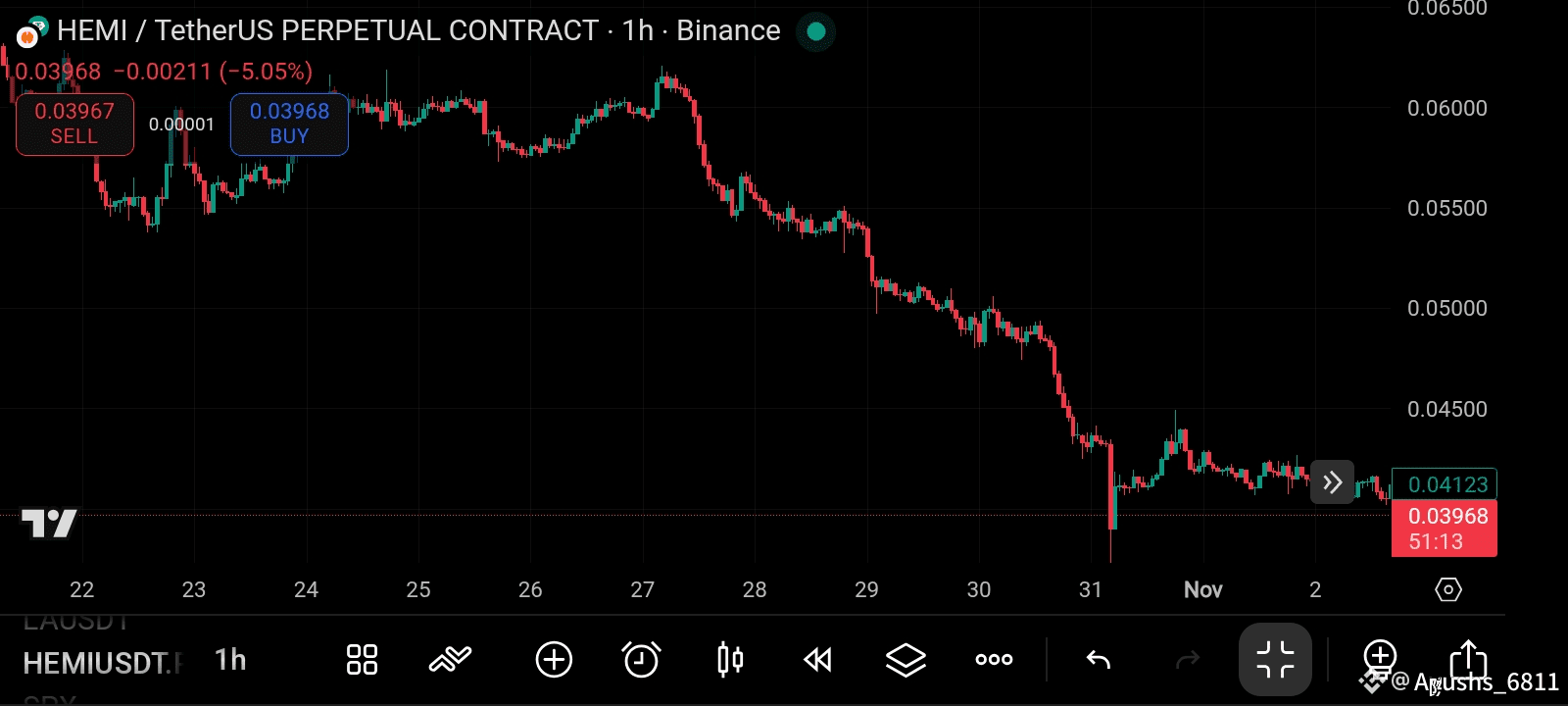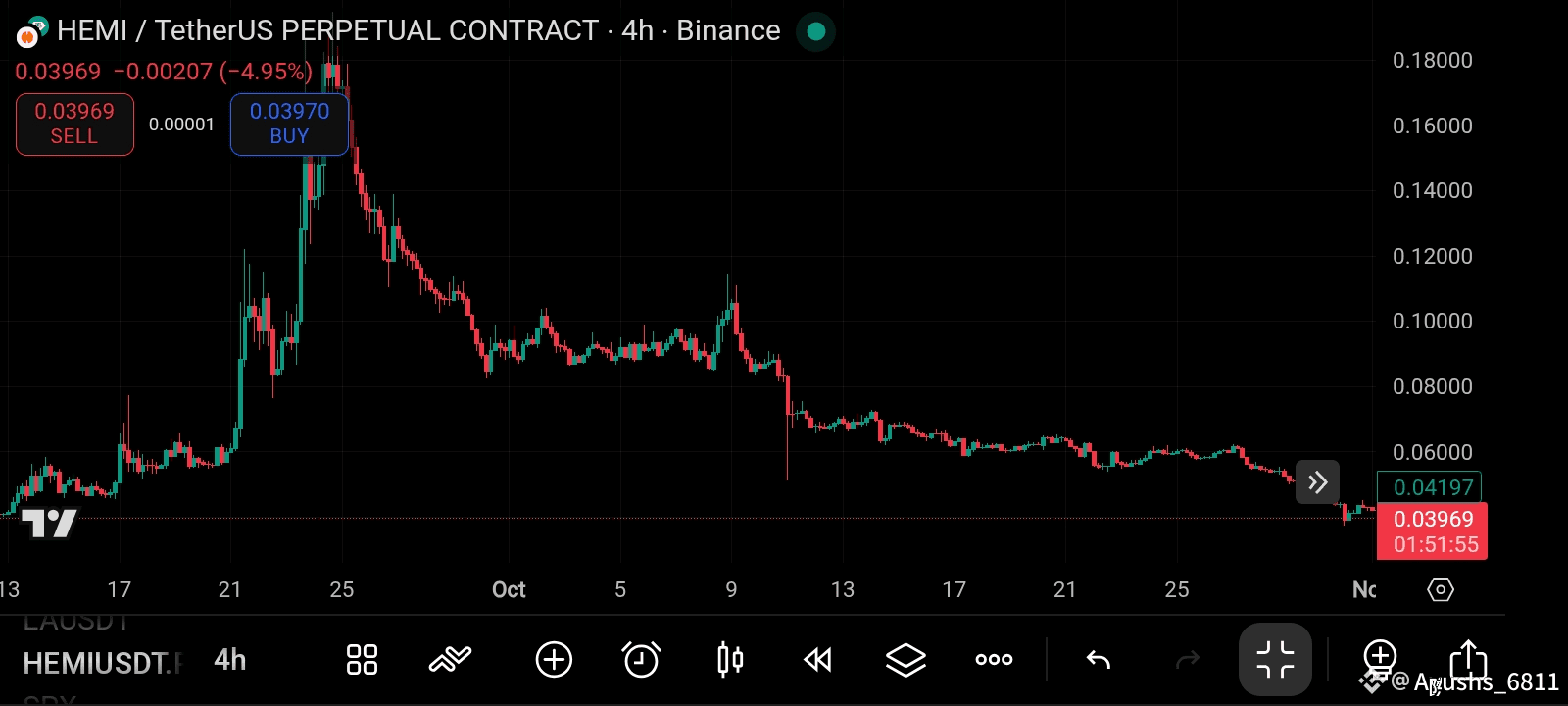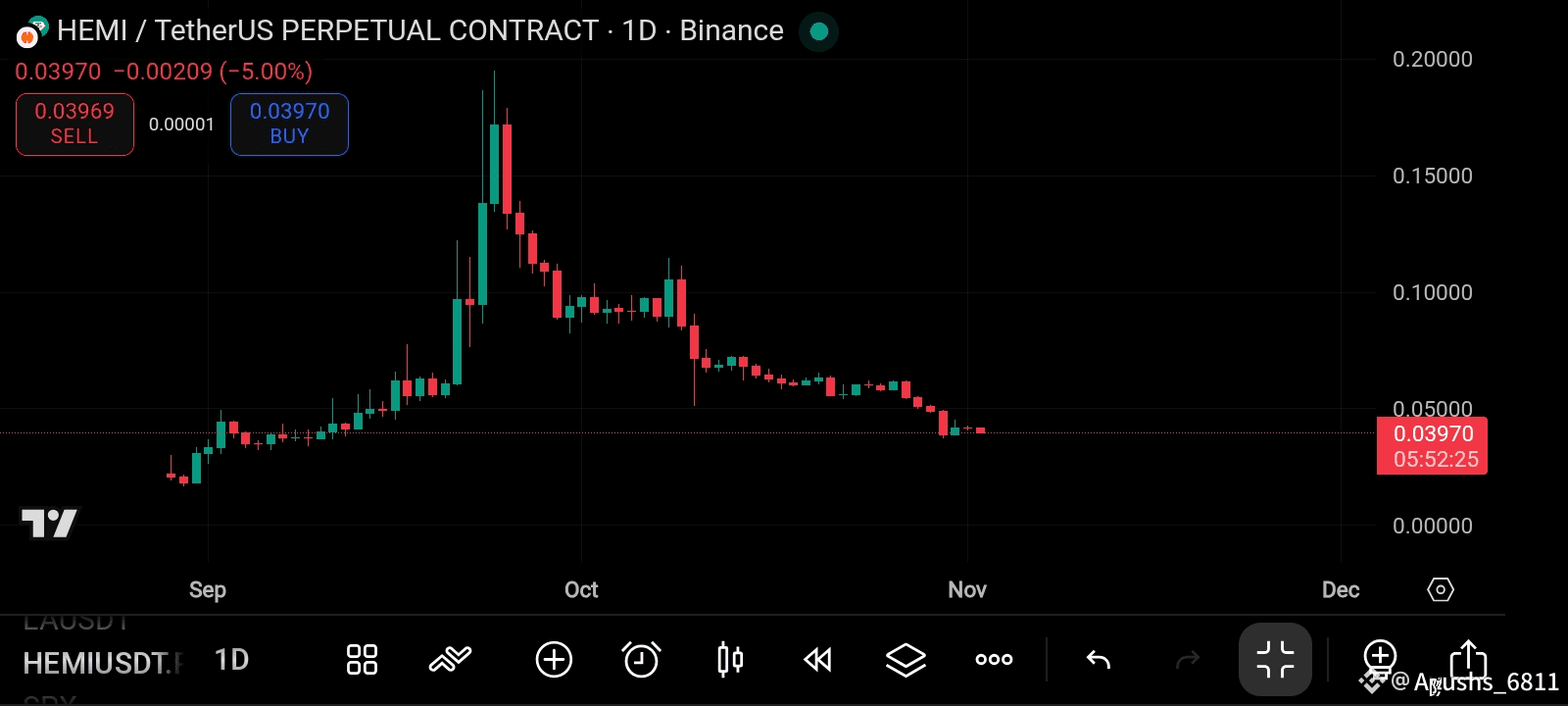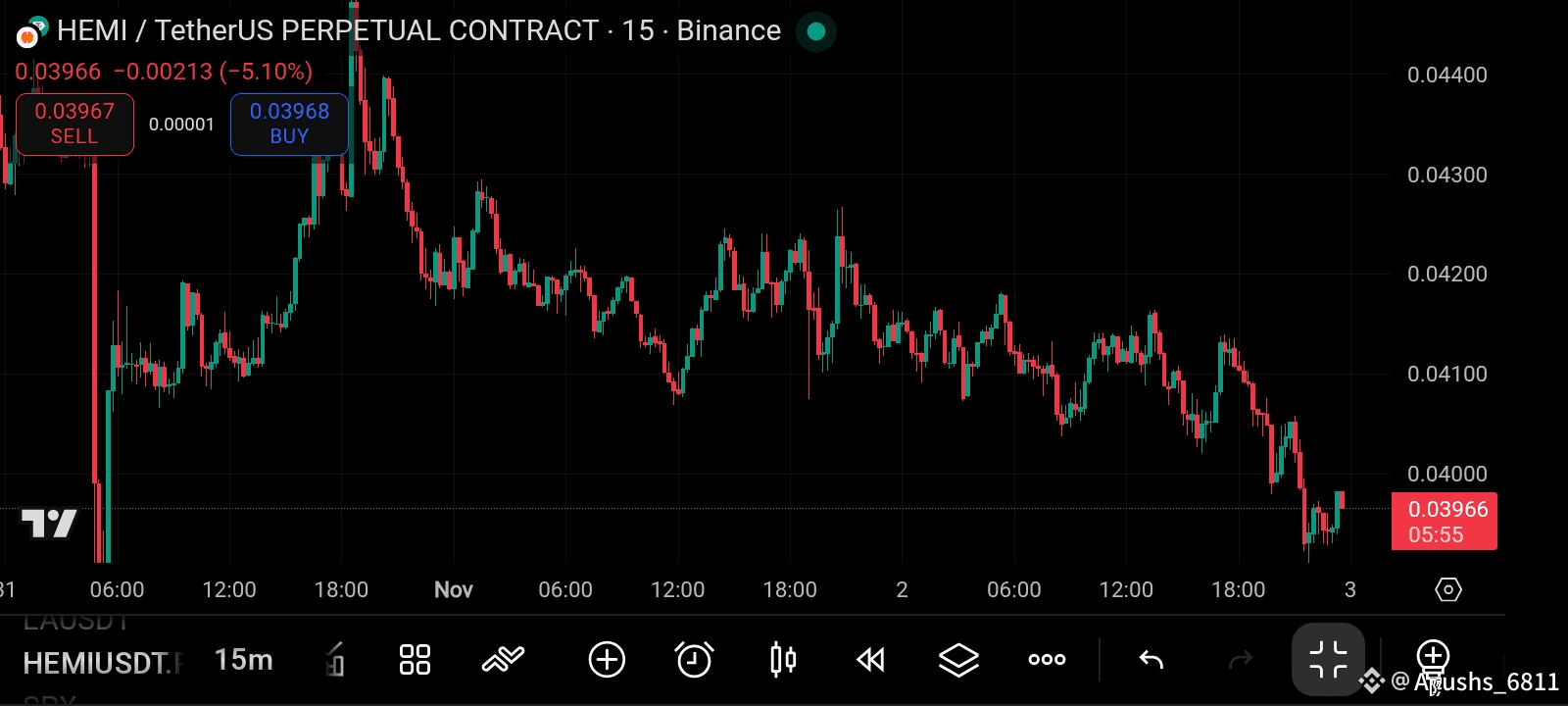Hemi has entered a stage where price action is no longer defined by excitement or panic — it’s defined by silence. The charts across all timeframes are beginning to align into one quiet narrative: exhaustion after expansion. After a steep decline from the $0.20 zone to below $0.04, the token is now hovering around $0.039–$0.040, consolidating in narrow ranges and printing repetitive candles that suggest indecision. This isn’t a collapse anymore. It’s the part of the cycle where traders stop reacting, and only the patient ones begin observing.
On the daily chart, the story is clear. Hemi had its euphoric moment in late September and early October, with prices exploding upward in what looked like an unstoppable rally. But that strength was quickly met with profit-taking, creating a series of lower highs that pushed the market into a steep correction. As prices compressed, volume faded and volatility thinned, forming a stretched base at the $0.039–$0.041 level. This kind of low-volume stability is typical of a cooling phase, where speculative money leaves and accumulation quietly begins. What’s most telling is not the size of the move but the rhythm — it’s slower, steadier, and beginning to show repetition.
The 4-hour timeframe reveals how deeply that rhythm has formed. After each major drop, the token has stabilized slightly higher than the last reactive low. The momentum indicators are flattening, which often suggests momentum reset rather than continuation. Buyers haven’t regained control, but sellers are no longer forcing the market either. The range between $0.038 and $0.042 has become a micro-zone of liquidity, absorbing short-term trades while giving whales enough time to reposition. When a market moves like this — with narrowing candles and quiet volume at lows — it often signals accumulation is underway beneath the surface.
Zooming into the 1-hour and 15-minute charts, Hemi’s microstructure confirms this idea. Short-term volatility remains alive, with intraday sweeps below $0.039 quickly recovering. These liquidity hunts show that smaller traders are still reactive, while larger players seem to be patient — collecting during every dip. The absence of panic candles and the presence of repeated quick recoveries both point toward a market that is trying to stabilize before it rebuilds structure. In such setups, even small surges in volume can shift sentiment very fast because the order books are light after prolonged selling.
Market psychology now revolves around one question: whether Hemi can reclaim its short-term moving averages. The first key level sits at $0.042, followed by a mid-range resistance near $0.045. If these are reclaimed with consistent volume, it could mark the beginning of a structural reversal. But for now, Hemi’s price is simply resting — neither bullish nor bearish, just coiled. Traders familiar with early-stage base formation know this phase well: the one where conviction is silent and charts move sideways for days before showing their real direction.
It’s important to recognize what this phase means from a broader perspective. Every strong rally in crypto begins where interest fades, not where it peaks. The most significant moves tend to emerge from flat, quiet zones where volatility collapses. Hemi’s current behavior reflects that exact sentiment — exhaustion followed by calm. As of now, no clear breakout pattern has emerged, but structurally, the token is no longer in free fall. It’s entering balance, and balance often precedes movement.
The next few days will determine whether Hemi finds stability strong enough to attract fresh liquidity or continues to drift quietly around its current range. In either case, this silence should not be mistaken for weakness. Markets often whisper before they roar. And when Hemi finally chooses its next direction, this calm period may be remembered as the point where conviction quietly returned.
In trading, silence is never random — it’s the sound of the market taking a breath before its next move.





